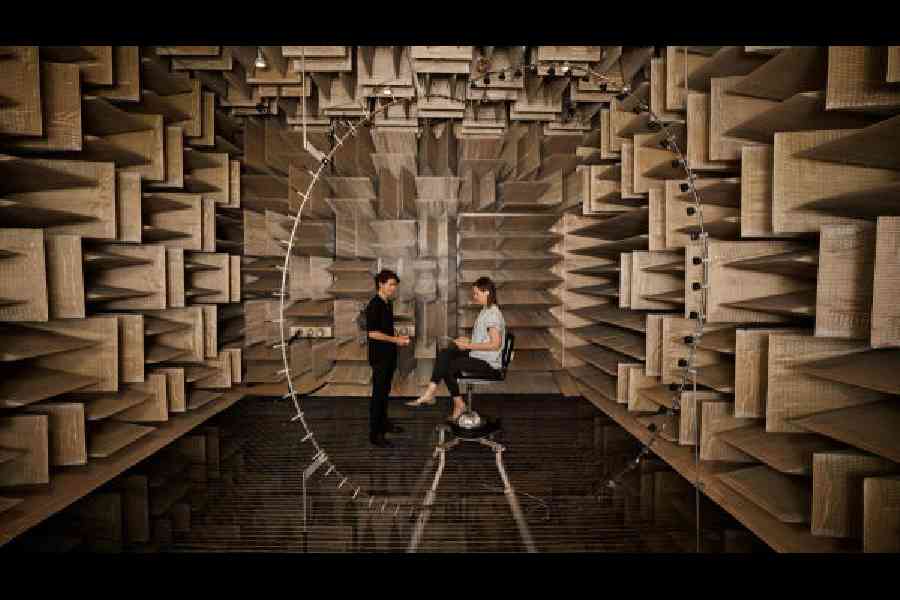Consider the daily routine of a family member who may have had mild hearing loss and over time it has progressed, to the point she can’t hear the click of a car’s turn signals. There’s hope. With Apple AirPods Pro 2 in the ears, the clicking can return and so can her independence to go anywhere.
One of the best tech offerings of the year, the hearing health features on this particular AirPods hold the promise of an era where we will get comfortable with people wearing earbuds at all times.
Several years in the making
Around 1.5 billion people globally experience hearing loss and many don’t do anything about it because of the stigma. What Apple has done is come up with a technology that turns the world’s most popular earbuds into an over-the-counter hearing aid.
In the US, Apple AirPods Pro 2 recently received approval from the Food and Drug Administration for use as an over-the-counter hearing aid device. And it’s a matter of time before other countries do the same.

Longwave, Apple’s largest anechoic chamber, includes a custom-built loudspeaker and microphone arc that can measure how sound interacts with the human body
In September, Apple announced a trio of major new hearing health features for the AirPods Pro 2, including clinical-grade hearing aid functionality, a hearing test, and more robust hearing protection. The three merge with the release of iOS 18.1.
The technology has been developed over several years and behind it is the company’s state-of-the-art Audio Lab in Cupertino, California. It’s a lab most haven’t even heard about till a few days ago. Apple uses it to conduct user studies in various listening rooms and test new features in its anechoic chambers, which completely absorb reflective sounds and isolate external noise.
“Hearing loss affects individuals in every region and country, yet often goes unrecognised. Hearing is a core component of communication for so many and is an important factor for health and wellbeing,” said Dr Shelly Chadha of the World Health Organisation’s technical lead for hearing. “Technology can play an important role in raising awareness and providing intervention options for those affected by hearing loss.”
This is where Apple’s team comes in.“Every person’s hearing is different, so we created an innovative, end-to-end hearing health experience that addresses this variability in a way that’s both simple to use and adaptable to a wide range of needs. That’s especially important because hearing loss affects people of all ages with different levels of tech savviness,” said Dr Sumbul Desai, Apple’s vice-president of Health. “With the Hearing Aid feature, we wanted to build something so intuitive, it felt like an extension of your senses. We knew the results would literally change people’s lives — and democratise access to treatment for a condition that affects more than a billion people.”
Anechoic chamber and Fantasia Lab
The reality is that the vast majority of people who have hearing loss don’t do anything about it. In the Audio Lab, a number of tests can be conducted.“From the quietest sounds we can hear for the Hearing Test feature, to speech in noisy restaurants for the Hearing Aid feature, and even concert levels for Hearing Protection, we can bring the real world into our acoustics facilities with playback of calibrated soundscapes from all over the world, or take accurate acoustic measurements at the touch of a button,” said Kuba Mazur, Apple’s hearing health lead engineer within Acoustics Engineering.
The Longwave anechoic chamber was built on a separate foundation that uses springs to isolate it from the rest of the lab, allowing for accurate sound measurements without any noise or vibration disturbances. The chamber includes a custom-built loudspeaker and microphone arc that can measure head-related transfer functions, that is, how sound interacts with the human body.
Then there is the Fantasia Lab that uses a spherical array of 50 loudspeakers to simulate hundreds of real-world sound scenes — like a shopping mall, busy street, or travel on an airplane — in a tightly controlled, evenly distributed sound field.
To bring the Hearing Aid feature to fruition, participants from a wide demographic were selected. The test consisted of a participant sitting in a chair in the middle of the space while a complex sound scene, like a noisy restaurant, played. The participant then had to repeat the words of a single speaker, distinguishing from background conversations.

Head and torso simulators were used to measure AirPods and to validate the Hearing Test and Hearing Aid features
“We brought the outside in to tune and validate features that we’re building on AirPods, like the Hearing Aid feature, Conversation Boost, and Transparency mode,” said Mazur.
Further, three clinical-grade audiometric booths — the type that patients would typically encounter during hearing tests in a clinician’s office — are permanently installed in the Audio Lab. For internal testing, the engineering team worked with audiologists in the booths to conduct thousands of clinical-grade audiometry tests and software-based hearing tests prior to moving the new Hearing Test feature into clinical validation studies.
This is a significant breakthrough. It democratises access to a test that normally requires you to go into a clinical office and can be very expensive.
The good thing about Apple’s hearing test is that it’s designed so that you can’t predict or game it. The test can play any frequency at any time, so no two are similar.
You may even learn that one ear has lost a bit more over the years than the other, which is something you may not notice in daily life. Results are stored in the Health app, where you can export individual tests (or all of them) as a PDF. This is indeed a tech milestone that shouldn’t be ignored.











